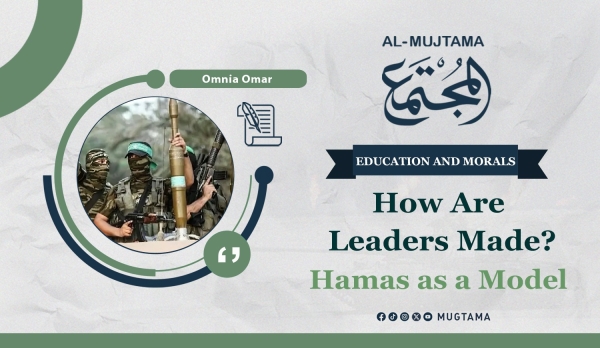On April 10th, Israeli occupation forces killed three sons of Hamas leader Ismail Haniyeh, along with several of his grandchildren and cousins in Gaza. Haniyeh received the news while visiting wounded Palestinians in Doha, Qatar. His only response was: “May Allah ease their path.”
Months later, on July 31st, Israel assassinated Haniyeh himself. On October 17th, media outlets broadcasted an image of Hamas leader Yahya Sinwar amid the rubble of a home in Rafah. He had been martyred, clad in his military vest, in direct confrontation with Israeli soldiers.
Ismail Haniyeh… The Palestinian Refugee Who Defied Israel
The next day, Hamas mourned Sinwar, with Khalil Al-Hayya, a senior political bureau member and the movement’s leader in Gaza, affirming that his martyrdom would only strengthen the movement’s resolve in its struggle against the occupation.
Leader Yahya Sinwar Joins the Convoy of Martyrs in 'Al-Aqsa Flood' Battle
These leaders, like those before them—beginning with the founding Sheikh Ahmed Yassin—raise a crucial question: How does Hamas shape its leaders?
A Lifetime of Pain and Struggle
Hamas leaders are forged in real suffering, one they carry from birth. From their earliest moments of awareness, they witness it in their families’ faces and the grim realities around them. Many of them lived through the Nakba as children and were forcibly displaced with their families. Sheikh Yassin was expelled from the village of Al-Jura in Ashkelon at the age of twelve. Ismail Haniyeh was born in Al-Shati refugee camp, and Yahya Sinwar in Khan Younis refugee camp. Most Hamas leaders after them were also born in refugee camps—symbols of Palestinian oppression and an ongoing reminder of their dispossession since before the 1948 Nakba.
This deep-seated injustice breeds both rejection of the status quo and an overwhelming desire to break free. Refugee camps represent both the historical grievance of the Palestinian people and a stark, explosive reality. If one manages to survive displacement and poverty, they will still likely endure the loss of family members to Israeli raids, home demolitions, land confiscations, or the suffocation of their life opportunities.
From Pain to a Mission
For some, this pain crystallizes into an idea—a conviction that has a transcendent dimension—whether divine or moral—that grants it purpose, justifies belief in it, and calls for sacrifice in its pursuit. It also has an existential dimension that links the idea to the very existence of the people themselves, an organizational and structural dimension that ensures its material presence and impact while allowing for the assessment of its success or failure, and a historical dimension that offers lessons, accumulates experiences, and sustains the endeavor with feasibility and possibility.
The liberation of Palestine, as an idea, possesses a transcendent divine dimension, supported by all divine revelations that call for resisting oppression and engaging in combat, while promising immense rewards for those who sacrifice along the way. It also has a moral dimension tied to concepts of justice, freedom, and resistance. Furthermore, it carries an existential dimension, rooted in a zero-sum equation where the existence of the occupier necessitates the elimination of the other. Here, elimination is not merely figurative—erasing history and culture—but rather a literal eradication through ethnic cleansing. Thus, liberation becomes a serious attempt to preserve existence and survival. The structural and organizational dimension is reflected in all the efforts and movements that have carried the idea of liberation and pursued it through various means. Meanwhile, the historical dimension situates the liberation of Palestine within the broader human struggle for freedom from all forms of occupation and enslavement.
Cultivating Leadership Through Community
This idea is then disseminated through different channels—mosques, schools, universities, prisons, fields, factories, and even homes—shaping the community's support structure. In the early 20th century, Izz al-Din al-Qassam began his efforts at Al-Burj School and Al-Istiqlal Mosque in Haifa. Similarly, Sheikh Ahmad Yassin cultivated most of Hamas’s leaders through mosques such as the Great Omari Mosque and Al-Shafi’i Mosque in Gaza. Many other leaders first encountered the movement through its student wing in universities, known as "Al-Kutla Al-Islamiya," while others were introduced to its ideology during their imprisonment.
These incubators do not merely provide moral support in terms of faith in the idea; they also offer material support to its adherents. This includes protection, as seen in the case of Abu Khaled Al-Deif, whom many families in Gaza sheltered and safeguarded as he moved in secrecy among the homes of the Strip. They also bear the material consequences of resistance as a choice, reassuring members that they are not alone—every price they pay has been paid before by others, and they will always have companions along the way. Furthermore, they provide security for those left behind, ensuring that the families of prisoners and martyrs are not abandoned, as these incubators establish a social system that cares for the wives and children of detainees, as well as the widows and orphans of fallen fighters.
Leadership Through Action
This foundation ultimately translates into action and leadership across all fields of resistance—whether through direct combat, politics, captivity, or imprisonment. While Sinwar was in prison, he led the resistance movement among detainees through study, reading, and intellectual engagement. At the same time, Al-Deif and Al-Ja'bari were planning the capture of Gilad Shalit through Al-Qassam Brigades fighters. Later, Khaled Meshaal and the political bureau led the negotiations that resulted in the Shalit Deal ("Wafa Al-Ahrar 1"), through which Sinwar was released.
This continuous shift in roles and leadership positions illustrates that leadership within the movement is not merely about hierarchical promotion. Rather, it represents a deep understanding of the movement’s core mission and the sacrifices it demands. This perspective extends beyond official ranks—every individual in the movement, from the political bureau to the widows of martyrs in their homes, plays a leadership role in their respective positions.
-------------------------------------------------------------


